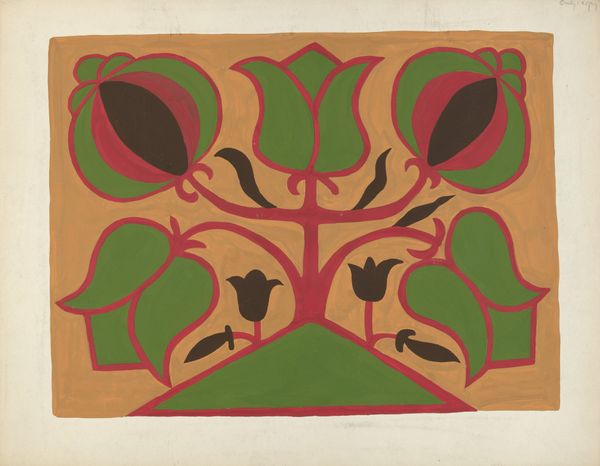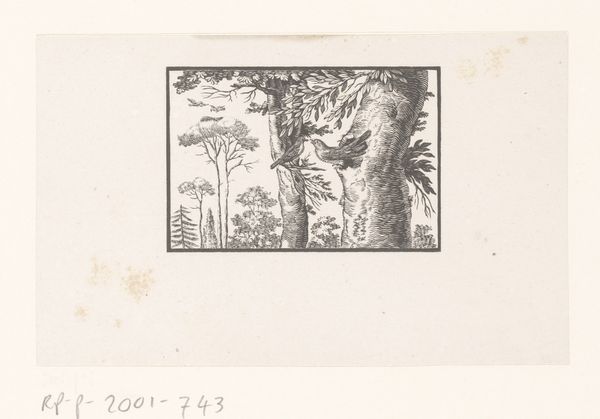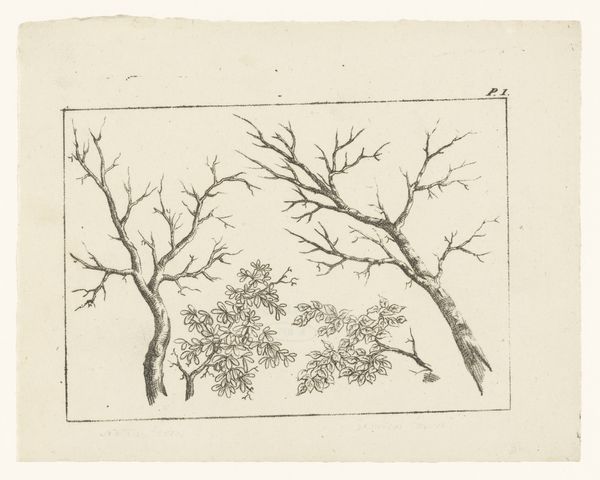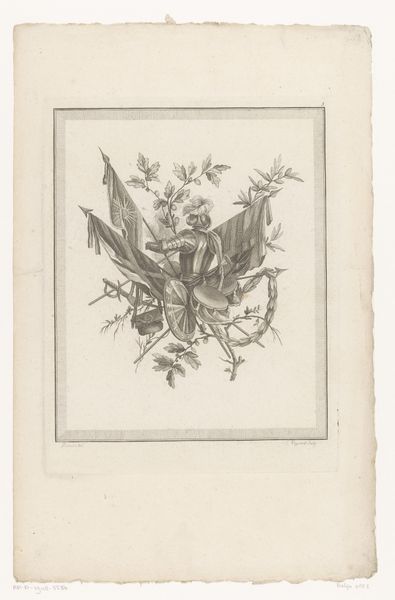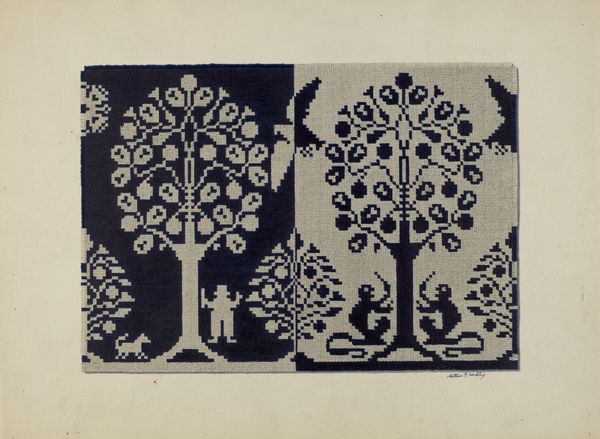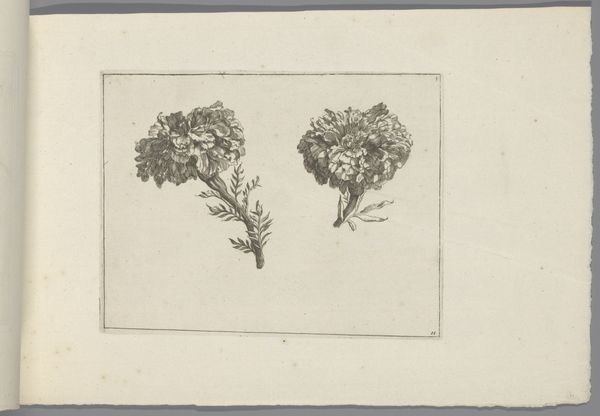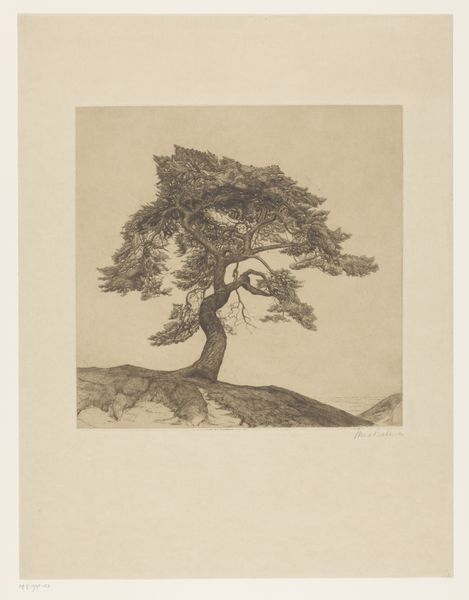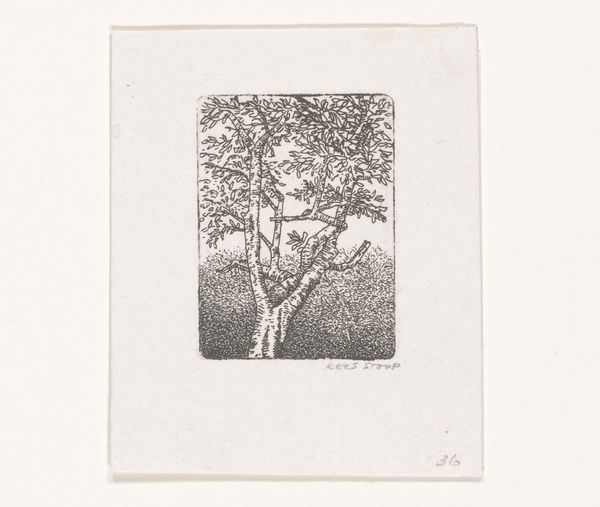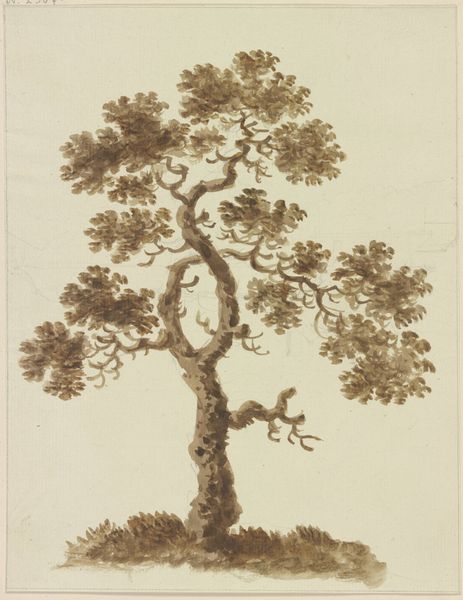
drawing, paper, ink
#
drawing
#
landscape
#
paper
#
ink
#
geometric
#
line
#
symbolism
Dimensions: height 109 mm, width 134 mm
Copyright: Rijks Museum: Open Domain
Curator: Welcome. We're looking at Julie de Graag's "Besneeuwde lijsterbes," created in 1918. It’s a lovely ink drawing on paper currently held at the Rijksmuseum. Editor: A snowy rowan tree indeed! It gives me such a serene feeling. The geometry is softened just enough with those bare branches and weighty snow-laden limbs. Curator: Let’s think about De Graag’s method. The piece demonstrates precision through line work with a minimalist color palette. Consider the type of paper used. The way ink settles is key to that soft grayscale tone. This artwork reflects a conscious choice to value craft during times of social shifts in artistic value. Editor: That limited palette definitely serves a purpose, beyond pure materiality. Gray, black, and white lend a starkness, appropriate for January. The Rowan tree itself—traditionally, a powerful symbol of protection. Winter strips away pretense, showing what is elemental and essential. Curator: Precisely. Think about it as a meditation on stark, simple means of survival represented within her constrained artistry during a World War I backdrop, focusing on the basic materials available, thus commenting on societal and aesthetic restraints. Editor: It strikes me that while austere in palette, it isn't bleak. Those curved branches suggest a quiet optimism, almost a cyclical promise, appropriate for imagery to be put together to represent “January”. In what ways are geometric design principles incorporated for iconographic meaning here? Curator: I see her simplification not just as design, but in terms of a production-based need for streamlined work, perhaps influencing the flattened perspectives in her printmaking as an act of necessity due to a changing socio-economic artistic world, that gives off strong visual messages in tandem. Editor: Very interesting point. The geometric style does also highlight that underlying structure, a hidden order to things—revealing underlying connections—much like winter revealing the bare bones of the landscape, thus becoming less ornamental. Curator: It reminds us that our art viewing experience changes as we analyze creation within contexts like limited means of distribution of information—perhaps a way she worked against wartime challenges. Editor: De Graag captures that intersection beautifully. This piece, beyond its tangible being, communicates ideas and perhaps something deeper in how it represents time itself through layered imagery. Curator: I agree that the work does transcend a straightforward interpretation, reflecting De Graag's material conditions to address timeless human themes, expressed in a beautifully simple artistic execution that creates powerful messaging.
Comments
No comments
Be the first to comment and join the conversation on the ultimate creative platform.
